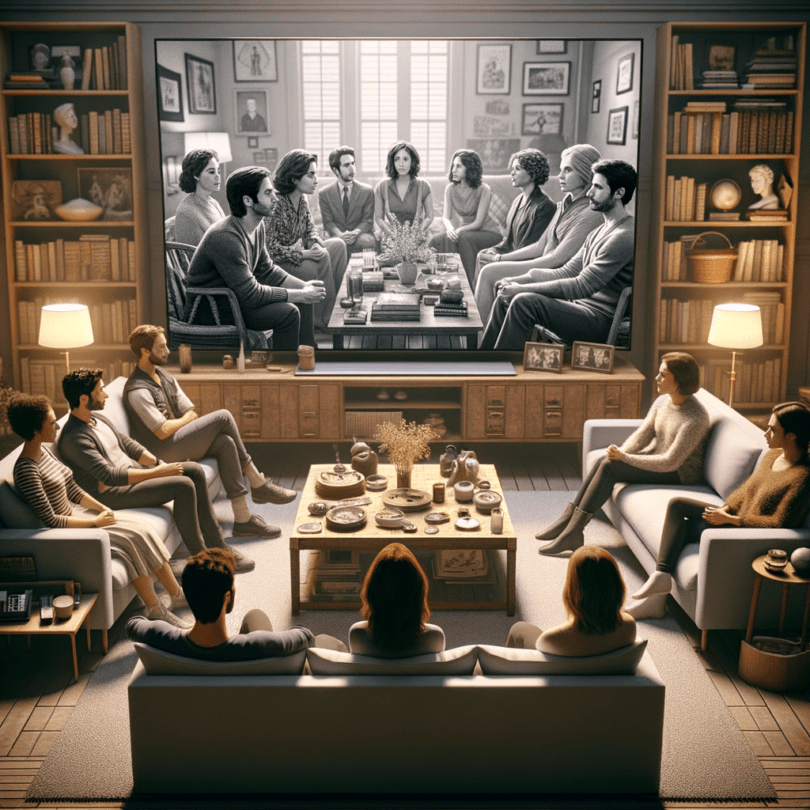More movies and TV series featuring queer characters are being produced now than ever before. Despite significant advancement in representing gay, transgender, and gender-nonconforming characters, the representation of bisexuality within the LGBTQ+ community has lagged, particularly in cinema. Filmmakers often think that audiences need to witness the romantic and sexual interactions between characters to understand and categorize their sexualities. This can be done explicitly through romantic relationships shown on screen or through coding, using attire, actions, or symbols to suggest their sexuality.
In recent years, TV shows have begun explicitly mentioning a character’s sexuality, either through dialogue or in a coming out scene. Brooklyn Nine-Nine and Heartstopper are two well-known instances. However, bisexual characters seldom have such moments in films. Instead, in movies, bisexuality is often implied through the characters’ choice of partners. A character is typically shown with a history of dating one gender before dating another, especially when this is made visually clear. Velvet Goldmine (1998) and Disobedience (2017) feature characters following this narrative.
For bisexual characters, simply engaging romantically with both genders seems necessary for their bisexuality to be acknowledged. Even so, their bisexuality is not always understood as genuine—often viewed as a phase towards “true” homosexuality or merely a “blip.” In The Kids Are All Right (2010), for example, Jules (played by Julianne Moore), married to a woman, has a sexual relationship with a man but still identifies as a lesbian. This reflects societal biphobic ideas that see bisexuality as not a “real” identity but merely a transitional phase to heterosexuality or homosexuality.
The 2021 Ipsos global survey included options for sexual attraction such as “mostly attracted to the same/opposite sex” and “equally attracted to both sexes,” along with “only attracted to the same/opposite sex.” The categories “mostly” and “equally” can be considered as bisexual orientations, highlighting the complexity in defining sexuality. Films that hesitate to define characters as bisexual without first “proving” it reinforce the notion that bisexuality needs to be “validated” in real life as well.
Once proven, bisexuality in films is often tied to negative traits. Historically, bisexual characters have been associated with criminality, with Basic Instinct (1992) being a prominent example of this portrayal. In this film, Catherine Trammell (played by Sharon Stone) is under a murder investigation while engaging in relationships with partners of different genders and using drugs. Bisexuality in films is frequently depicted as “excessive” and “transgressive.” The recent movie Saltburn (2023) perpetuates this notion. The character Oliver (played by Barry Keoghan) is portrayed having sexual encounters with both male and female characters, though his sexuality is left undefined. Yet, his murderous motivations suggest a broader notion of him as transgressive, potentially linking his bisexuality with that idea.
This film can be interpreted in various ways. It could be viewed as associating bisexuality with violent intentions or psychopathy, much like how Basic Instinct linked sexual “deviance” with other forms of deviance. Alternatively, the film’s satirical elements might provoke thoughts on how bisexuality is often used as shorthand for negative traits.
In contrast, television is more successful at developing nuanced bisexual characters of all genders, who openly discuss their bisexuality without being reduced to criminal or excessive traits—examples include Nick from Heartstopper, Callie Torres from Grey’s Anatomy, and Adam Groff from Sex Education. However, in films, bisexual characters still lack a voice and are associated with excessiveness. To overcome this issue, filmmakers must develop bisexual characters who represent more than just personality traits and who can articulate their identity without having to “prove” it throughout the narrative.

